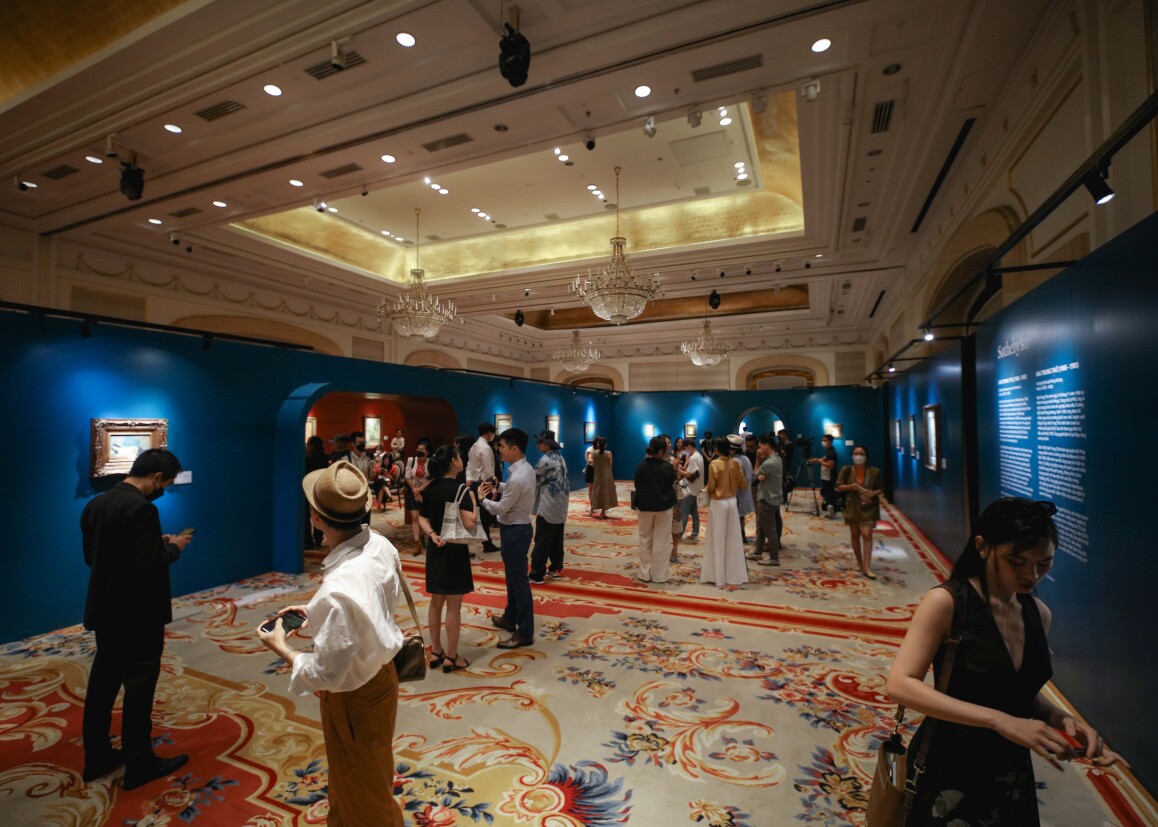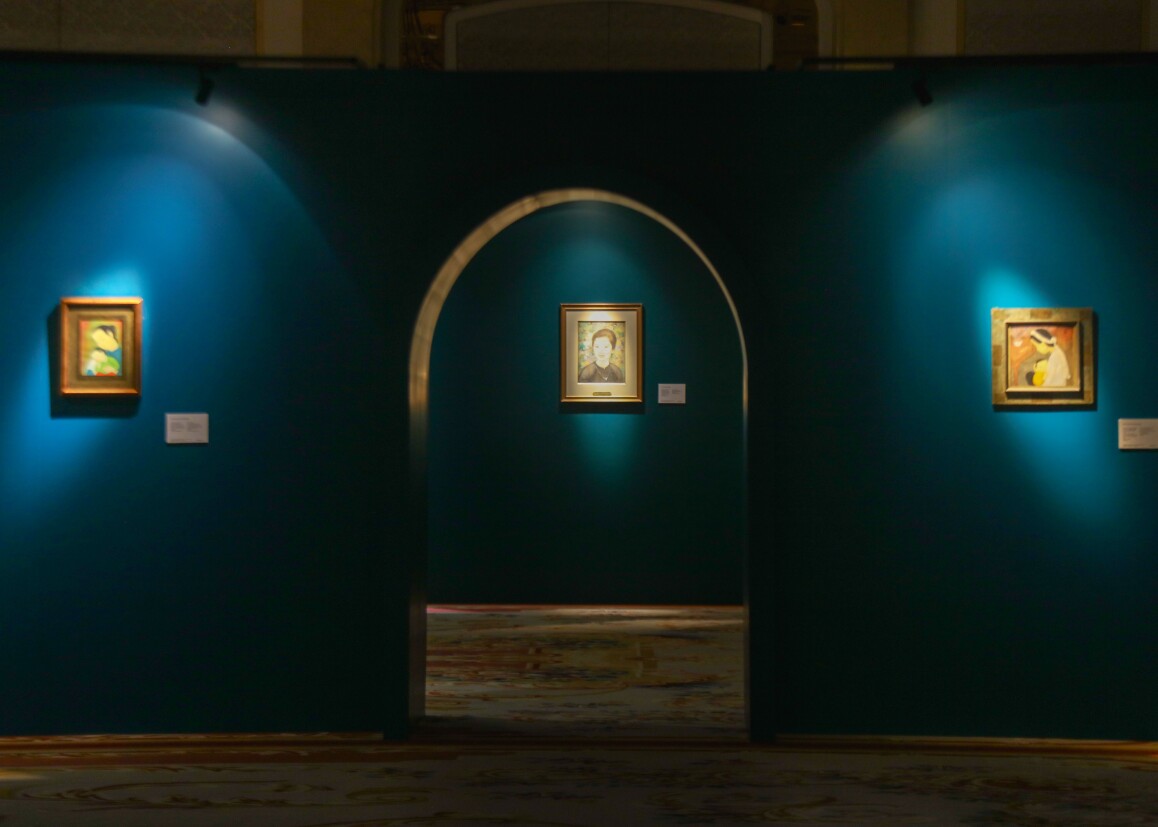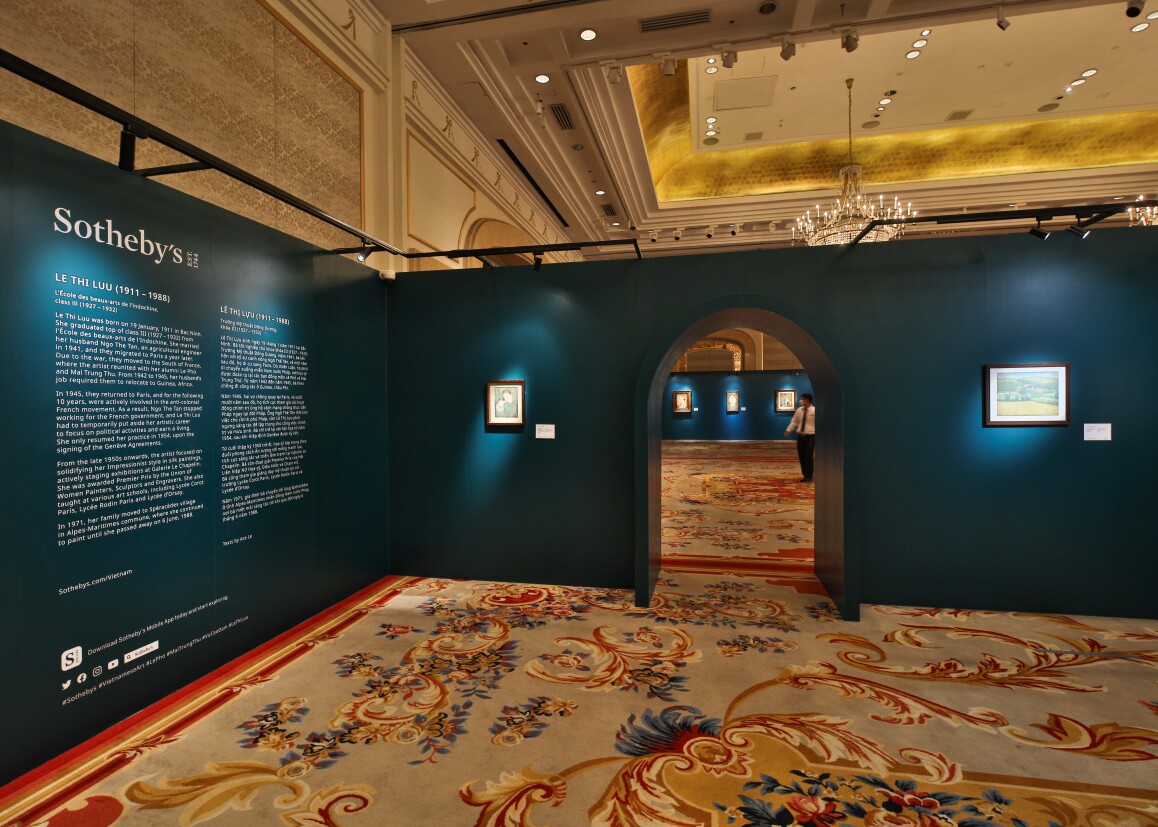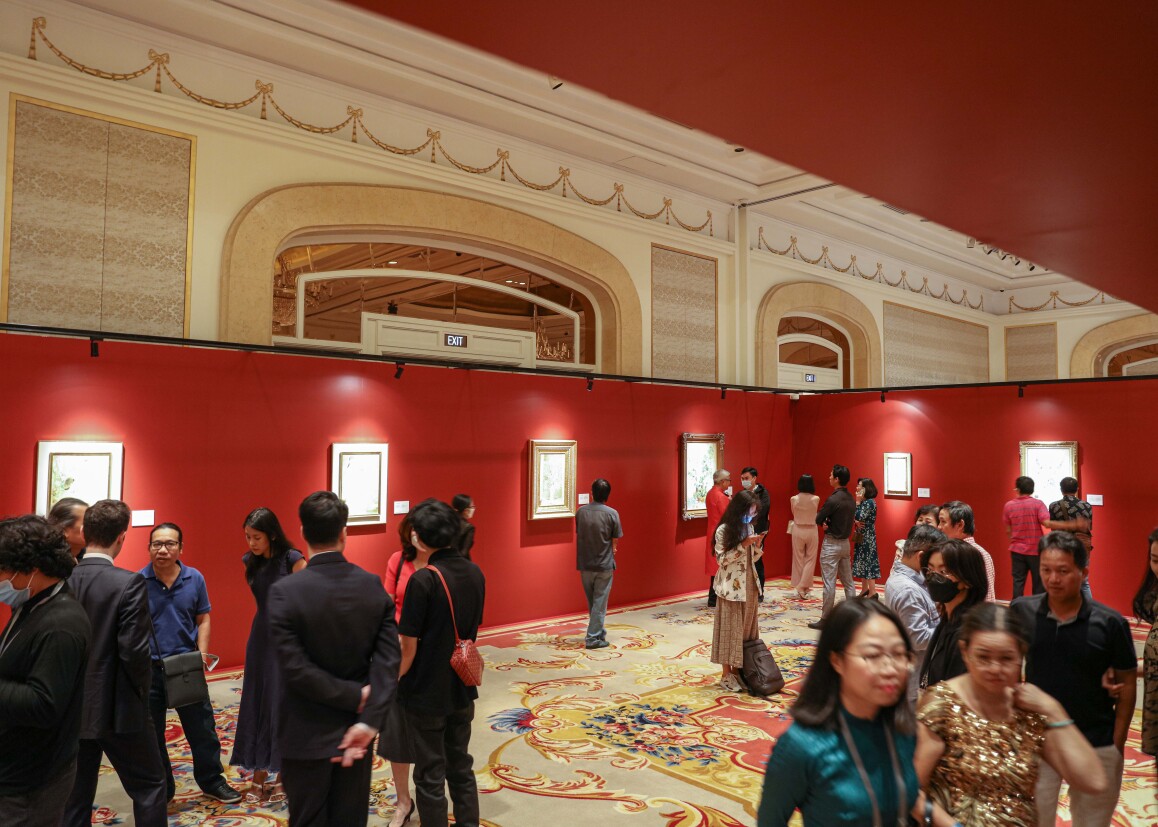S otheby’s first ever exhibition in Vietnam was a success surpassing highest expectations. Already hailed as a landmark show, Timeless Souls: Beyond the Voyage – Hồn Xưa Bến Lạ has generated such fervour since its opening on 11 July at the Park Hyatt Saigon that event organisers extended the capacity three times in the week to fulfil entry requests. Beginning Monday, thousands of residents and visitors made a beeline for the highly anticipated event, one of the largest modern art exhibitions ever staged in the country. Celebrating the art of Vietnamese masters from the École des Beaux-Arts de l'Indochine, the assemblage featured more than 50 works by Le Thi Luu, Le Pho, Mai Trung Thu, and Vu Cao Dam, artists who found themselves entrenched in a new canon of modern art, which ultimately developed into a unique integration of Vietnamese and French artistic styles.

“We recognize the importance of Vietnam as a cultural wellspring and its rapidly growing collector base with a passion for collecting and a thirst for knowledge," says Jasmine Prasetio, Managing Director, Sotheby's Southeast Asia. "It is Sotheby’s privilege to share our expertise and experience. By staging a public, non-selling exhibition, it is our hope that this educational endeavor can contribute to reconnecting the Vietnamese community with their rich heritage.”
Timeless Souls: Beyond the Voyage – Hồn Xưa Bến Lạ is already being hailed as a milestone event. Here’s why:
Rare Access to Vietnamese Masterworks
“This is a milestone for the Vietnamese art community across all levels,” says Ace Lê, an independent researcher and writer on Vietnamese art and co-curator of the exhibition. Together with Sotheby’s Asia, Lê envisioned Timeless Souls: Beyond the Voyage – Hồn Xưa Bến Lạ as a platform for cultural dialogue between the community and its greatest painters. It is a textured narrative expressed through the diasporic artistic experience and memories of Vietnam – layered by cultural identity, personal experience, distant landscapes, family life, colonial history, everyday rituals, and age-old philosophies.
“This is a milestone for the Vietnamese art community.”

“Vietnamese fine art lovers know about these artists but they rarely can see the works directly,” Lê says in an interview with Việt Nam News. He explains the reason why the public rarely has access to these masterworks. “Almost all of the works are kept in private collections. This exhibition gives people a chance to get closer to these artists.”
The selection process was highly deliberate, identifying paintings that represent the most significant points of each artist's oeuvre spanning four decades beginning 1930 with the establishment of the Ecole des Beaux-Arts d’Indochine in Hanoi. Through some persuasion, private collectors who were initially reluctant saw the importance of the exhibition and agreed to lend their works for show. From the initial list of 200, Sotheby’s and Lê focused the selection to 56 masterpieces.
"Sotheby’s is globally known for their professionalism, so we have complete peace of mind when handing over our artworks to them," says prominent collector Nguyen Thieu Quang, who has lent part of his collection for this exhibition.
"We are humbled and thrilled to see and hear the wave of positive response this exhibition has brought."
Prasetio adds, "We are delighted that it has spurred dialogues about art in the community and hope that it can continue to demonstrate how everyone can contribute to creating a healthy ecosystem for art to thrive."
Ascent of Vietnamese Art on the Global Stage
“International statistics show that Vietnam is the best-growing art market in Southeast Asia,” Lê said to Việt Nam News. “The Vietnam exhibition is the first non-selling exhibition of Vietnamese art in Sotheby's history. It is meaningful and strategic to express Sotheby's respect for the Vietnamese public and market. The exhibition is held to pay tribute to fine art history and Vietnamese collectors and fine arts lovers.”
"Sotheby’s has been cultivating the Southeast Asian art market for over two decades," Prasetio says. "We are proud to have brought some of the most remarkable works by regional artists onto the international platform."
This underscores the dramatic growth of the Vietnamese art market, observed especially in the past few years at auction. The new artist record for Le Pho set by Sotheby's Hong Kong at the Spring 2022 Modern Evening Sale emphasises the ascent of Vietnamese art on the global stage. With new heights achieved at auction for coveted works on silk, canvas and lacquer, the insatiable demand for art in the category has been fuelled by rising interest not only in Asia, but also around the world. In June, Sotheby’s experts weighed in on the trend.
“It has been thrilling for us to cultivate the blossoming collector base within Vietnam and witness their fervent longing to own the important vestiges of their history.”
While Vietnamese art has been grabbing headlines in recent years, Sotheby's Modern Art Specialist Rishika Assomull says there have been for decades many significant collectors from Europe, North American and Southeast Asia, attesting to the enduring appeal of Vietnamese art throughout the world.
New Audiences Amongst Art Lovers Beyond Southeast Asia
Amongst the Sotheby’s specialists in attendance at the exhibition was Michelle Yaw, an authority on Southeast Asian modern art, who has said, “What’s also clear is that these artists are appealing to many different audiences; there is something classical, yet inventive, about the Vietnamese modern artists that collectors find instantly attractive and can easily fall in love with."
"The demographics for Vietnamese art collectors are geographically vast and the market is healthy and holistic."
Timeless Souls: Beyond the Voyage – Hồn Xưa Bến Lạ brings together a mélange of rich Vietnamese history and collective memories of the culture. Owing to the country’s past, foreign influences are discernible in the art, especially as many pioneers of Vietnamese modern art emigrated to France or had studied at the prestigious École des Beaux-Arts de l'Indochine in Hanoi before World War II. Reinterpreting and synthesizing French post-Impressionist trends, prominent artists mastered European techniques and media to express traditional Asian subjects and ideas, thus creating a distinctive style.






